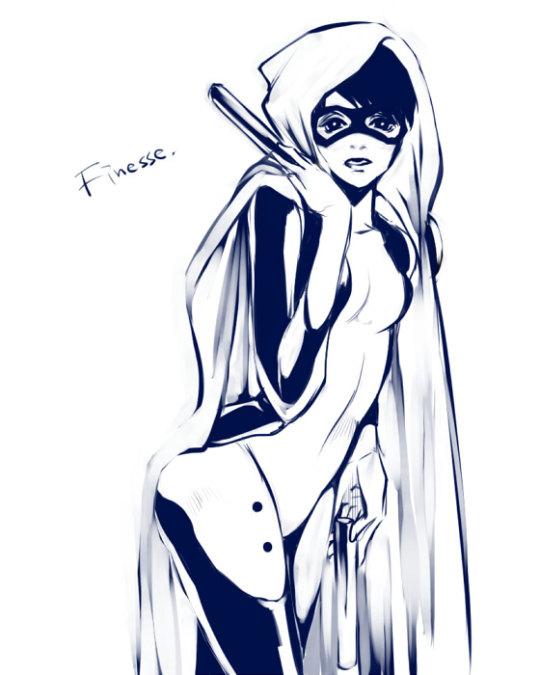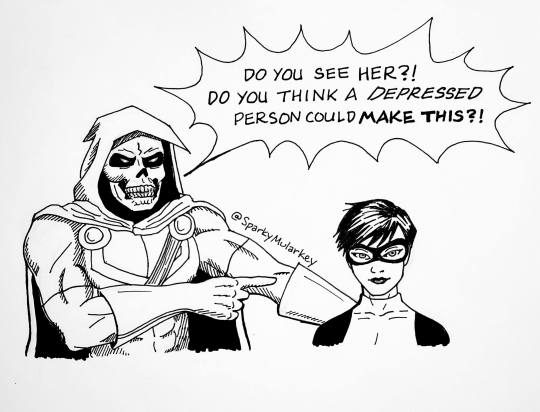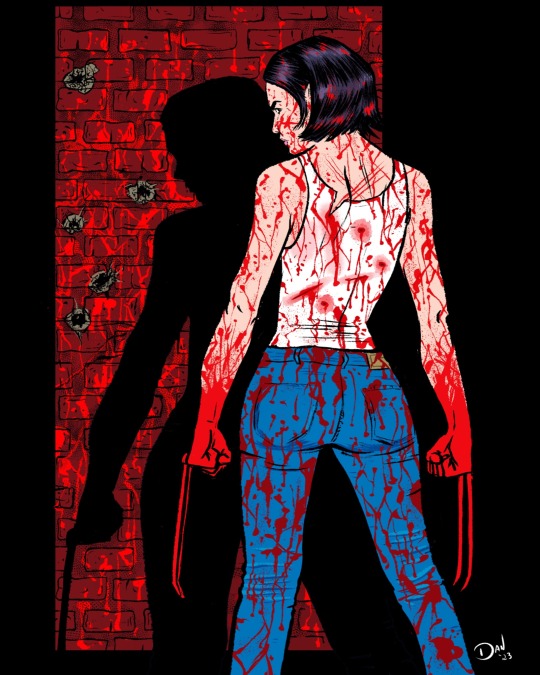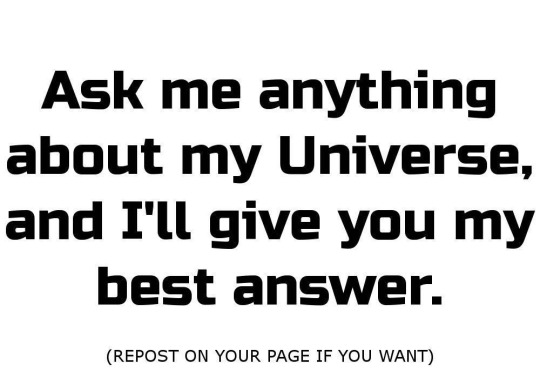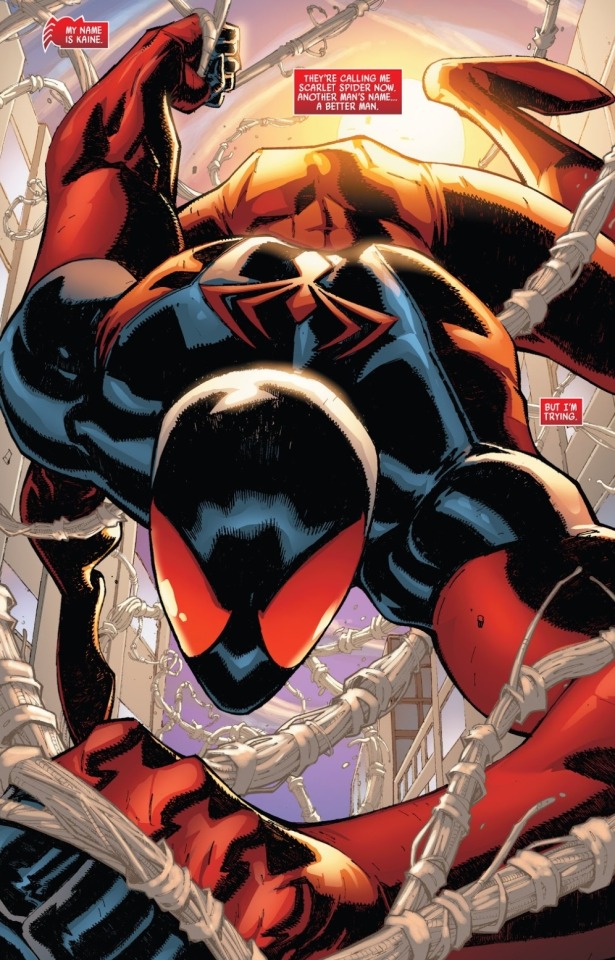Text
I am thinking about...... Kaine and Harry having parallel arcs about struggling to overcome the villainous legacy of their abusive fathers. Both of them making the wrong choice over and over because maybe this time it will make their fathers love them. The associations for both of them between power and monstrosity. The way they both take on that power to protect the people they love even though it's killing them and they hate themselves for it. Harry putting away the costume as a sign of moving forward vs Kaine putting on the costume as a sign of moving forward. Both of them sacrificing themselves for redemption. Are you seeing what I'm seeing.
63 notes
·
View notes
Text
In 2019, after a decade of theatrical releases, the Marvel Cinematic Universe (MCU) reached new heights of box office success with the release of Avengers: Endgame, the second-highest-grossing film of all time. Earning just under $2.8 billion globally, it’s little surprise that Disney (the home of the MCU) and Sony Pictures (which holds the film rights to Spider-Man) decided to join forces in order to engineer another such cultural event.
In Spider-Man: No Way Home, Tom Holland leads his third stand-alone film as the web-slinger, but this time the filmmakers have ported in characters from Sony’s two previous Spider-Man franchises, where Tobey Maguire and then Andrew Garfield donned the iconic red-and-blue suit. The storyline allows Holland’s Spider-Man to get some much-needed distance from the Avengers — though Doctor Strange (Benedict Cumberbatch) plays a supporting role — and it provides an opportunity to contrast his version of the character with those past portrayals.
A Working-Class Hero
In the beginning of director Sam Raimi’s 2002 Spider-Man, Uncle Ben and Aunt May are in the kitchen of their working-class home in Queens discussing their finances. After thirty-five years, Ben has been laid off from his job as a senior electrician because, as he says, “the corporation is downsizing the people and upsizing their profits.” May reminds him they’ve had tough financial patches in the past, and they’ll get through this one too.
This scene roots the story of Spider-Man in a working-class household, and it’s a constant feature in his life and the lives of those he cares about. Maguire’s Peter Parker does all manner of jobs to make a bit of money, such as participating in a wrestling match, selling photos of himself as Spider-Man, and even delivering pizza in the second film. Meanwhile, his neighbor (and longtime crush) Mary Jane Watson (Kirsten Dunst) has to wait tables at a diner as she tries to become a stage actress.
They’re not rich people, and their finances shape their stories throughout Raimi’s trilogy. Raimi shows us how Daily Bugle editor J. Jonah Jameson bullies Peter into accepting meager pay for his Spider-Man photos while Mary Jane’s boss berates her after her shift. At home, Peter’s landlord snatches the $20 his aunt gave him for his birthday right out of his hands, citing back rent, while the bank refuses to do anything to help Aunt May refinance her home, forcing her to move out. But while the “good” characters are under the foot of capitalists, the same can’t be said for the first villain of Raimi’s trilogy.
Norman Osborn (Willem Dafoe) is an incredibly wealthy man who runs Oscorp, a chemical company and military contractor. He’s also the father of Peter’s best friend, Harry, and while he initially presents himself as someone Peter can trust, he becomes Spider-Man’s chief adversary when he inhales a performance-enhancing chemical and becomes the Green Goblin. After trying to kill Peter and threatening the lives of Mary Jane and Aunt May, Osborn eventually kills himself after miscalculating an attack on Spider-Man.
Here in Raimi’s original trilogy, the wealthy CEO is no hero and Peter pays a heavy price for his proximity to the billionaire Osborn. It’s a far cry from how Marvel’s Kevin Feige frames the story of Holland’s Spider-Man and his mentor, the charismatic superhero billionaire Tony Stark (aka Iron Man).
The Billionaire’s Apprentice
When the MCU’s first stand-alone Spidey film, Spider-Man: Homecoming (2017), introduces its lead, the audience for once doesn’t get an origin story for the character. Instead, we’re treated to a video log catching us up on the events of Captain America: Civil War (2016), when Spider-Man appears at a battle in Berlin after being recruited by Tony Stark (Robert Downey Jr). This introduction limits the ability of Holland’s Spider-Man to develop his own non-Avenger identity, especially when paired with the influence Stark has in shaping who he becomes.
When he’s not suited up as Iron Man, Tony Stark plays various roles at Stark Industries, an arms manufacturer whose weapons are used to wreak havoc around the world while making Stark himself fabulously wealthy. In Raimi’s Spider-Man, the rich man is the bad guy, but in Homecoming and the films that follow, he’s the hero that Peter looks up to. Peter’s association with Stark also alleviates his financial worries, to the point that if he ever comments about not having much money, it’s hard for the audience to take seriously.
To illustrate that contrast, Homecoming’s villain is the Vulture, also known as Adrian Toomes (Michael Keaton). Toomes isn’t a billionaire playboy; he runs a salvage business that aids in the cleanup of New York City after it was wrecked in The Avengers (2012). Despite making the investments necessary to fulfill a salvage contract, the project is taken over by the Department of Damage Control, a joint initiative between Stark Industries and the US government, and Toomes’s salvage business goes under. When his livelihood is taken from him by the same billionaire that helped destroy his city, he turns to arms trafficking to provide for his family and keep his crew employed.
Instead of capitalists oppressing Peter and those he cares about, as in Sony’s first Spider-Man trilogy, in the MCU, a billionaire is to be worshipped, while the people he’s harmed are the enemies. In the second film, Spider-Man: Far From Home (2019), the villain and his team are once again people who’ve been mistreated by Stark and his company, while murals are erected to honor the deceased Iron Man. Unlike in Raimi’s trilogy, where the villains are troubled figures being pulled between good and evil, Feige does not allow Spider-Man’s adversaries the same nuance, despite their legitimate grievances.
The Corrupting Force of Technology
In Disney’s MCU, wealth isn’t the only concept whose representation is reshaped to align with ideas that serve powerful interests — even the costumes have transitioned from cheap spandex to something out of a Northrop Grumman catalog.
Take Tony Stark, a billionaire who has no real superpower of his own. Instead, he has the ultra-expensive gadgetry built into his Iron Man suit — tech he gives to Holland’s Spider-Man. As a result, the audience gets a very different picture of technology, its consequences, and its military applications than in Raimi’s films.
In Homecoming, Spider-Man’s suit has a dizzying array of advanced weaponry built into it, along with an AI assistant and a connection to Stark Industries’ military surveillance network. Once its restrictions are removed, Spider-Man has access to facial recognition, tracking capabilities, taser webs, and many more invasive and deadly options. In Far From Home, those capabilities are enhanced after Stark leaves him a pair of connected sunglasses (he accidentally calls a precision strike on one of his classmates while wearing them). In a world of NSA surveillance and drone warfare, superheroes gain those capabilities — in Spider-Man’s case, often for comedic effect — to normalize the actions of the US military. (The Pentagon has long shaped the portrayal of the military in Disney’s MCU, including in the Iron Man movies.)
Conversely, Raimi’s trilogy takes a much more critical approach to technology. And when the military shows up, it works with Oscorp, not Spider-Man. In those films, Spider-Man’s powers are biological, to the point that his body produces its own webs. (Holland’s Spider-Man uses web cartridges.) In Raimi’s Spider-Man 2 (2004), Dr Otto Octavius (Alfred Molina) wants to create a mini-sun to power the world and builds a set of mechanical arms equipped with an AI to help manage the fusion reaction.
But when he loses control of the energy, it fries the chip that keeps him in command of the arms and the AI turns him into Doctor Octopus — a villain driven to complete the project at any cost. These technologies, just like the Green Goblin’s sled and suit in the 2002 Spider-Man, are corruptions for their characters, not enhancements. Yet for Amy Pascal, the producer who oversees Spider-Man at Sony, a hero that was connected to Iron Man and “rooted more in technological innovation” felt “much more modern,” even as it robbed the character of its soul.
What Future for Spider-Man?
As part of the MCU, Holland’s Spider-Man has little time for the people of New York City. He travels around the world and even into outer space to fulfill his duties. And when he is in New York, he’s more of a nuisance than a help.
But Raimi’s working-class Spider-Man is rooted in his city. In Spider-Man 2, after an iconic sequence where Spider-Man stops a subway train from running off the tracks, the passengers catch him as he falls, then pull him into the train and promise to keep his identity a secret when he reawakens. For them, Spider-Man is not a superhero, he’s one of them — another working-class, outer-borough New Yorker.
In that movie, Aunt May explains that “there’s a hero in all of us.” She isn’t trying to say that everyone can be an Avenger, but that everyone has a part of themselves that strives to do the right thing, just as parents sacrifice for their kids and residents work to better their communities every single day. It’s those actions that allow people “to die with pride, even though sometimes we have to be steady and give up the thing we want the most, even our dreams.” Maguire’s Peter Parker isn’t an outlier; he’s just doing that in his own way, reflecting his circumstances.
As an Avenger, Holland’s Spider-Man is too busy trying to live up to Iron Man to settle into the role of a friendly neighborhood hero, but No Way Home leaves the door open to a new life for the character. To send the heroes and villains from the previous Spider-Man franchises back to their own timelines — spoiler alert — Holland’s Peter has to make a sacrifice of his own: everyone who’s ever known him has to forget who he is. After Doctor Strange casts the spell, the film ends with Peter moving into a dated studio apartment with no friends, no Avengers, and no money. He’s finally able to chart his own path.
No Way Home had the third-biggest global opening weekend ever, pulling in more than $600 million even without a release in China, so it’s no surprise that Sony and Disney want to continue their lucrative partnership. Holland is set to return for another trilogy of Spider-Man films, but it’s not clear which path his story will take.
The studios could take the easy route of having him find a way to bring everything back to normal, then step into Iron Man’s shoes and wield his impressive array of military technologies. But they could also take a more daring approach.
By resetting Peter’s relationships, a more mature version of Holland’s character could return to his roots and become the Friendly Neighborhood Spider-Man he was meant to be. Even more crucially, he could reassess his relationship with Tony Stark — recognizing the billionaire arms manufacturer who conscripted a teenager into a paramilitary force was maybe a villain all along. It would be a compelling storyline and one that would challenge the MCU’s devout fanbase.
But allowing the space for critical reflection might also jeopardize Iron Man’s status as a reliable cash cow. Since Disney has led the charge to reorient cinema around bland, action-packed blockbusters, the choice between taking a risk on a bankable property or continuing to rely on its successful formula is an easy one. Disney will take the money.
111 notes
·
View notes
Photo

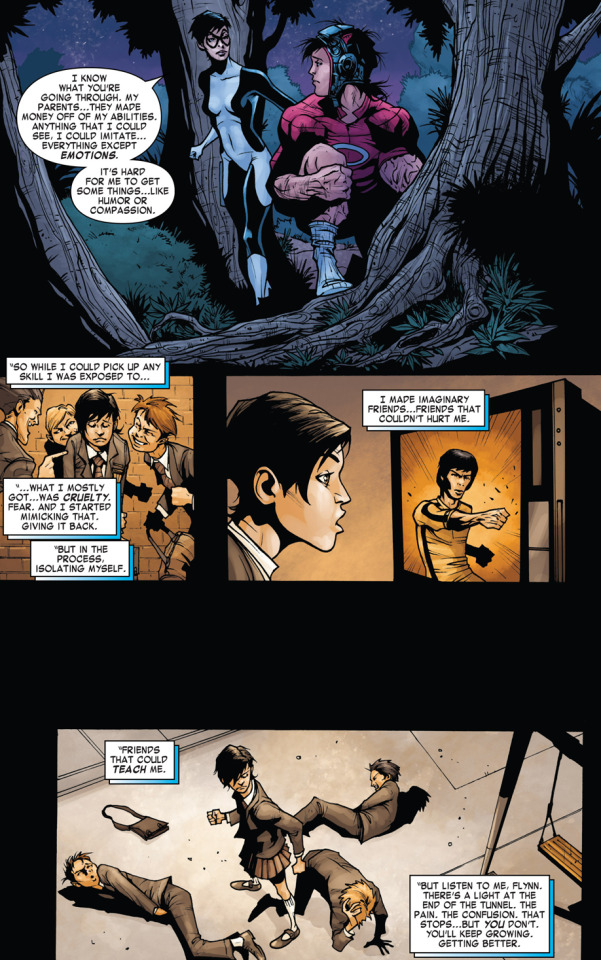

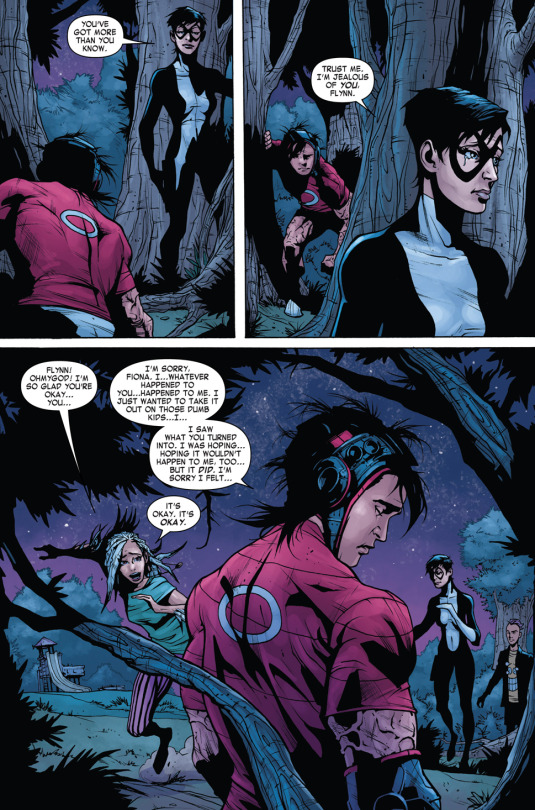

Inhumanity: Awakening #2 (2014)
written by Matt Kindt
art by Paul Davidson & Jean-Francois Beaulieu
68 notes
·
View notes
Text
i am never ever ever gonna be over kaine okay because. because they made an evil clone - scary and threatening and violent and angry - and then they made the very core of him love.
he was abandoned and cast out but refused to go because he loved his father, and how could he leave. and he watched his replacement be made and get the love that was taken from him and tried to hate him but instead all he could do was love him and call him his brother. and he did terrible horrible things and caused so much pain and all because he loved his brother and thought it was the only way he would be happy. and he almost stopped, almost gave it all up because he met someone and he thought she was saying you don't have to be a monster, because I love you but instead she was saying I love you, because you are a monster so OF COURSE he became more of one. and he lets himself be turned into a monster (by the Jackal, by the Other) again and again and again because he thinks it's the only way to earn his father's love. to save his child's life. to avenge his brother's death. and he dies over and over for his family. he lays down his life out of love and then gets dragged from the grave only to do it again. and again.
and of course he became a hero. because ben and peter turned around and called him brother and told him I love you, we're the same so of COURSE he remade himself in their image, with peter's suit and ben's name. he looks at aracely in her blue sweatshirt and wants to be better because he loves his brother and his brother is dead and that's the only thing he can do for him. the jackal couldn't make him spider-man out of hate but kaine made himself the scarlet spider out of love. and he sacrificed the joy it brought him to his friend's grief, to their shared grief, but he still couldn't give it up because how could he?
do you get it. do you understand. he is mean and angry and violent and it's all love, all the way down.
288 notes
·
View notes
Text

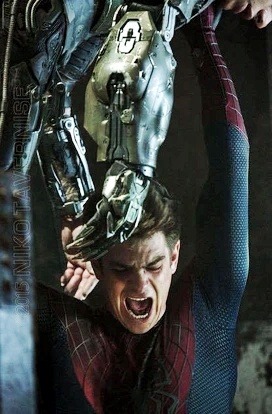
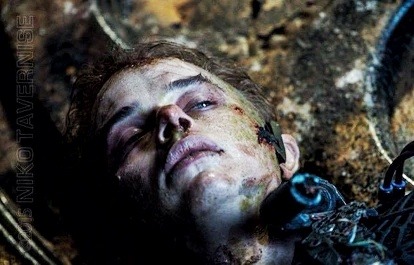
"The Amazing Spider-Man 2* deleted scene: the Spider-Man that nearly killed (Harry Osborn/Green Goblin).
Not killing. He'd have realized what he was doing in the last seconds just like the comics. But to be honest, it was old comics and Spider-Man has to always be a hero, if it was maybe a bit realistic, he could have killed, yes.
103 notes
·
View notes
Text
The reason Marvel editors have always hated Mary Jane Watson is simply because she’s an independent and sensual woman who would never date them. They want Peter Parker to just embody them, but MJ loves Pete for qualities they don’t have.
527 notes
·
View notes
Text
Peter Parker x Laura Kinney
Peter Parker x Laura Kinney (No official ship name. I vote for Spiderine) is a rare ship between a friendly neighbourhood vigilante and a former assassin cloned to be the perfect killing machine. Despite their different backgrounds and handful of interactions, I believe that this ship has lots of potential and deserves more attention.
An example would be their shared trauma. At first, you may question what the hell I'm talking about considering how different their origin stories are but consider this. They both feel responsible for the death of their parental figures. Uncle Ben was murdered as a consequence of Peter's actions, while Sarah was killed by Laura because of the actions of someone else. You can also add the deaths of Gwen, Logan, and others based on the continuity.
My point is, Peter, can at least somewhat understand Laura's pain, and help her open up and to move past her guilt. Laura can fill a similar role, understanding Peter's pain better than most.
Their interactions would also be hilarious to read. An example would be Peter trying to talk Laura out of killing his bullies. Another would be breaking the news of their relationship with Logan. For more examples, look at the incorrect quotes that I posted about them.
The ship fits a lot of standard marvel fanfic types. These include Standard Stories, Team as Family, Vigilantism, Superhero School etc. Therefore, it shouldn't be difficult to make it fit in with whatever story you wish to tell. Fanart is a similar thing. There's a ton of potential for that as well.
I don't want to make this too long, but I am willing to discuss this ship further with anyone interested. Please reblog and share this post with anyone that you believe would be interested. So far this pairing has only 23 (Ironic, I know) fics on Ao3 and I wish to change that.
28 notes
·
View notes
Text
Why Peter is probably more powerful than most of the other Spider-Heroes
One thing that’s annoying is that in stuff like the Marvel Handbooks Spider-Man’s power levels are usually inaccurate to his established feats. Of course there is stuff that is incredulous like his (nevertheless really cool) battle with Firelord but then there is stuff like the Master Planner Trilogy where Spidey lifts way more than 10 tons, which is the usual number given to his level of strength.
If you look at all the viable canonical feats of 616 Peter Parker he’s actually well above the 10 ton range in terms of strength.
What’s worse though is that handbook and other sources lazily just give every spider person power levels around the same number.
This really makes no sense considering the spider powers work via granting strength and speed proportional to that of a spider.
Which means their comparative levels will be different to one another relative to their own body sizes, shapes and fitness levels.
Spider-Gwen for example is clearly has a smaller body build to Peter so it’s illogical that via the spider powers she’d have the same level of strength and speed as him. He’d outclass her in the former and she him in the latter.
However even putting that aside I actually think you could make the argument that Peter compared to Miles, Miguel, Gwen, Cindy, Mayday and yes even Ben and Kaine is probably a lot more powerful than them.
It all boils down to experience.
During Michelinie’s run Peter lost his powers but observed that he was still incredibly fit and muscular because being Spider-Man meant he’d gotten a lot of exercise. This is corroborated by Greg Weisman of the Spectacular Spider-Man cartoon fame. In a podcast he commented that to him (and within the universe of the show) the spider bite gifted Peter with super strength but it didn’t just immediately bulk him out, but enhanced his potential to build such muscle.
Thus whilst all the Spider-Heroes (sans symbiotes and Kaine) are supposed to have the same powers the levels of those powers will vary depending upon how much each of them have sought to develop their abilities.
Thus Peter as the most experienced and longest term user of his spider powers has naturally developed his abilities beyond everyone else and critically done so under a variety of combat conditions.
This can’t be underestimated because Peter’s years of experience realistically would’ve built up immense muscle memory within his body thus in combat he would simply be able to dodge, attack and generally move faster and more skillfully than every other spider character even if you take their speed and spider senses out of the equation.
And as Michelinie’s story demonstrated Peter’s activities naturally built up his muscles anyway meaning that he’d actually be stronger even in comparison to his clone Ben Reilly.
Kaine would be an exception as he has had training and possesses just raw physical strength beyond Peter’s along with years of experience in using it. But then again Peter has beaten him before and taken down foes bigger than Kaine (like the Rhino). This is in spite Peter routinely holding back his full strength whereas you’d imagine a killer like Kaine would’ve have that kind of regard.
If Kaine is supposed to be stronger why did he struggle against the Rhino and never casually punch off anyone’s jaw when Peter was able to pound the former into submission and Otto in Peter’s body unintentionally punched off Scorpion’s jaw due to not being used to Peter’s strength.
The only way to square things is to either say Kaine’s powerset grants him MORE than just the proportional strength of a spider whereas Peter himself has just developed that power to the point where he can close the gap between himself and Kaine.
159 notes
·
View notes
Text



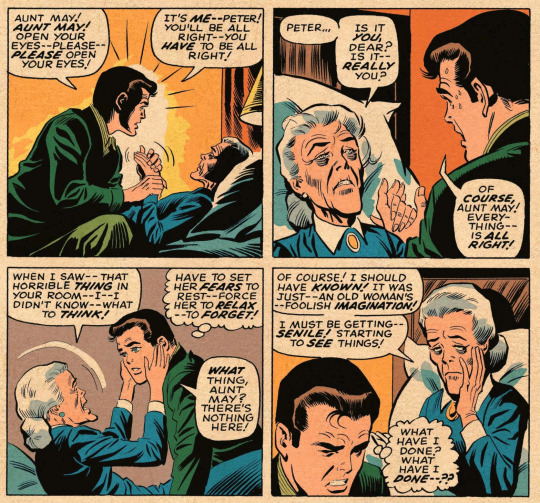
Pete, you idiot. What did you think would happen?
5 notes
·
View notes
Text
Peter and Cindy: Flirting in a not-so-casual way.
Laura: It's just pheromones. It's just pheromones. It's just pheromones. It's just pheromones.
Peter and Cindy: Lean in for a kiss.
Laura: NOW YOU'RE JUST PUSHING ME!!
45 notes
·
View notes
Text
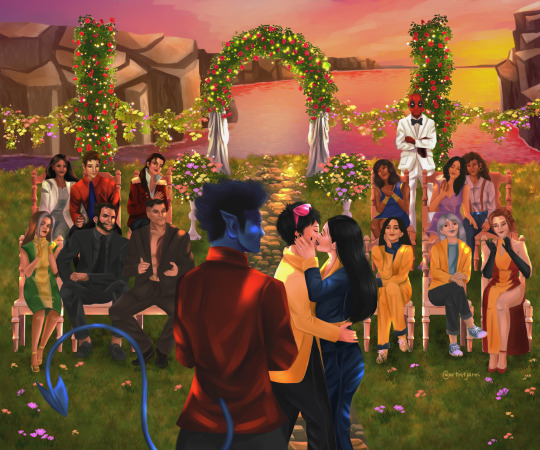
I commissioned this a few weeks ago, and I absolutely love how it turned out.
78 notes
·
View notes

